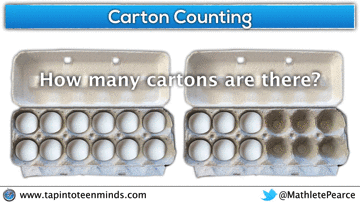Tools I Use in Math Class - Part One
Well, I fell off the blogger wagon. Time just seemed to disappear this week so I won't make my goals. But, back at it.
"Success is not final, failure is not fatal: it is the courage to continue that counts." - Winston Churchill.There are many tools - digital and some old school - that get used on a regular basis in my class. I am lucky to have access to iPads and Chromebooks so the digital tools are an option for me. This post is part one of two where I give my "old school" aka non-digital options.
Tools include:
- Exercise book - this is the warmup book where students do practice questions or some number talk thinking. It is "old school" but sometimes you just need to use pencil and paper.
- Coil notebook - this is what we use for our Interactive Notebook (INB). We do foldables and various other notes. Students use the left page to practice and do upgrade questions, or add extra information. I also take a photo of my master notebook to put into a shared folder so students who are absent, need help with notes or don't have their notebook at home can access the pages.
Example of page from INB
- Vertical Whiteboards (VWB) - these are 2 feet by 4 feet and are a great tool. Studies have shown that students will write on a non-permanent surface on average in less than 30 seconds while it typically takes more than 2 minutes to start on paper. It is also more environmental than using chart paper all the time. I have found that there is more work done, and less "decorating". The students can use them to present their work to other groups or to the whole class. If I want to keep the evidence I just take a picture with the iPad.
- Personal Whiteboards - these are great for quick check ins and can be used to hold up answers so you can see who knows the answer. Students are much more willing to answer the question when using whiteboards. I can also choose one for "the favourite form" or "the favourite no" to display on the document camera to use as a lesson too. The downside to either whiteboard is the number of whiteboard markers I seem to go through. I am currently collecting the dead ones to determine how many I actually go through in a year. Eraser tip: I buy the microfibre cloths from the dollar store, and cut them in half. The work great, are easy to store, and in the summer I just wash them up.
- Chart paper - Sometimes you need to use a large grid, or you want group work to be displayed for a longer period of time on the wall. This is when I find the chart paper useful. (It is also good for creating anchor charts - good activity for the students is to develop the anchor chart for a topic then have the class choose which one to display on the main bulletin board)
What are your favourite tools to use in class? Drop a comment!













